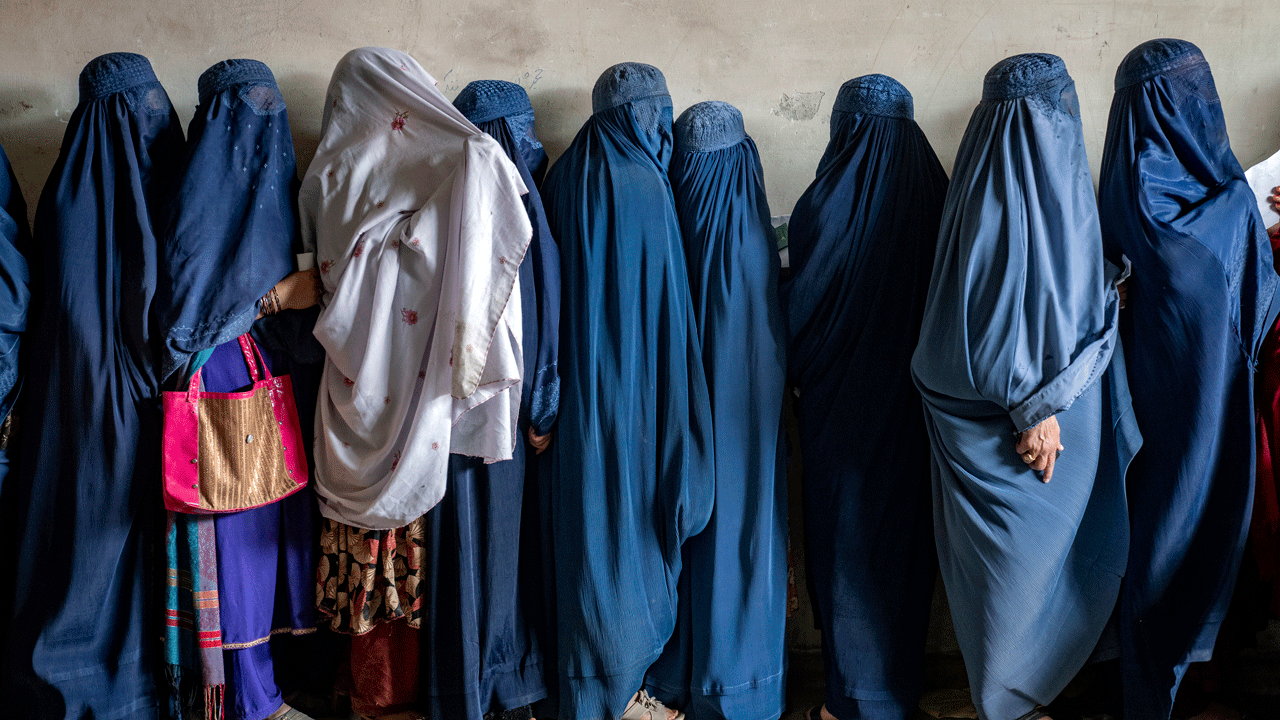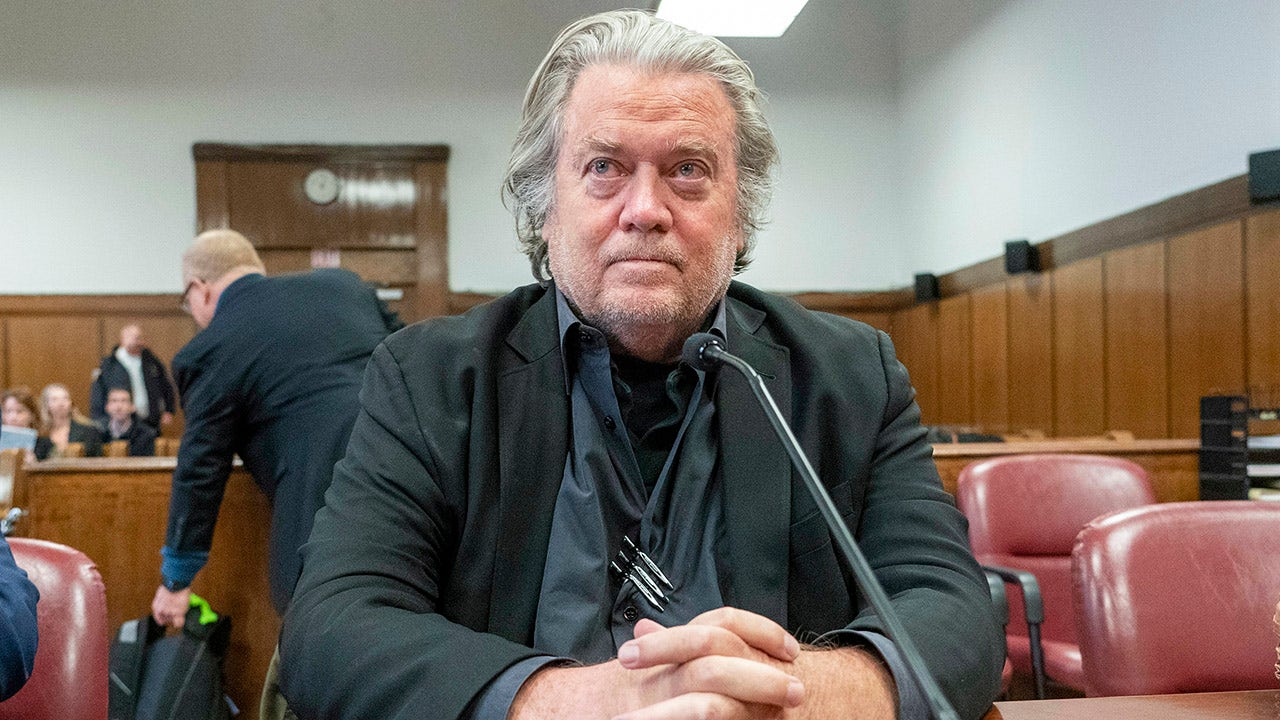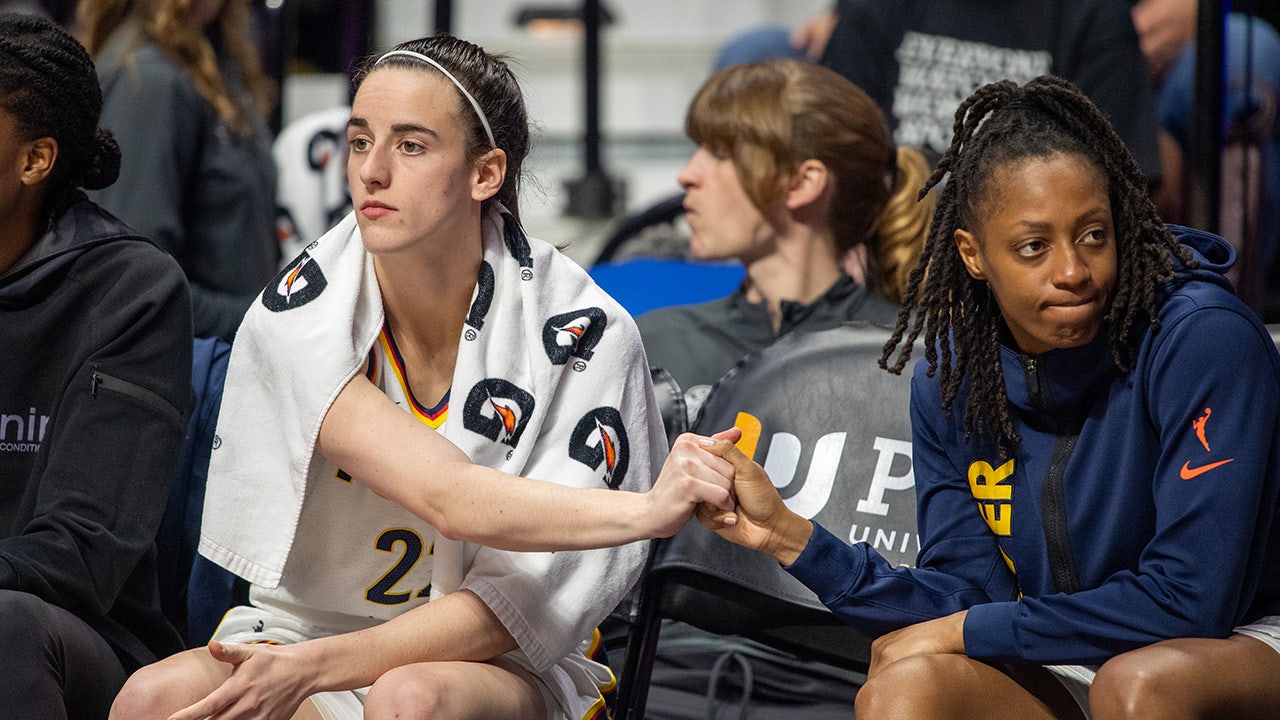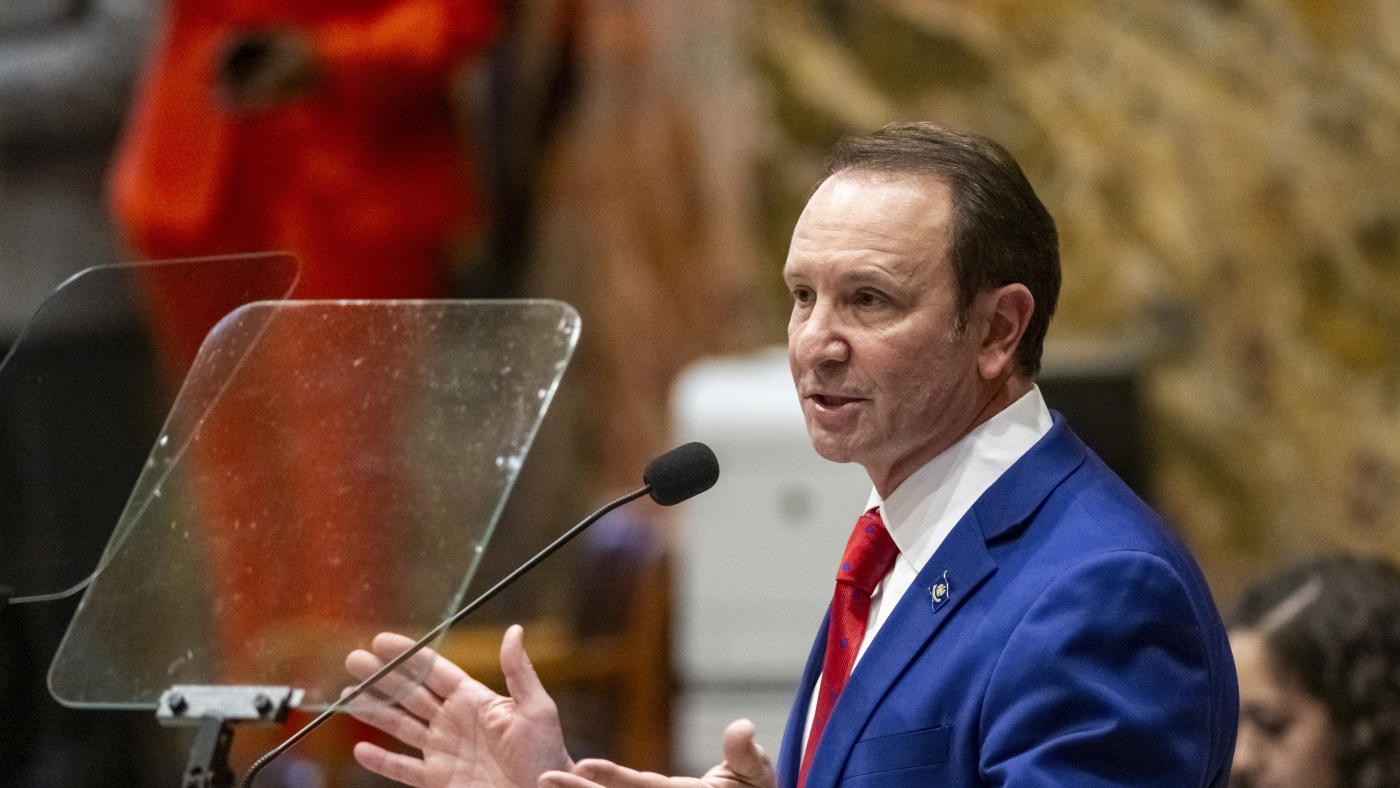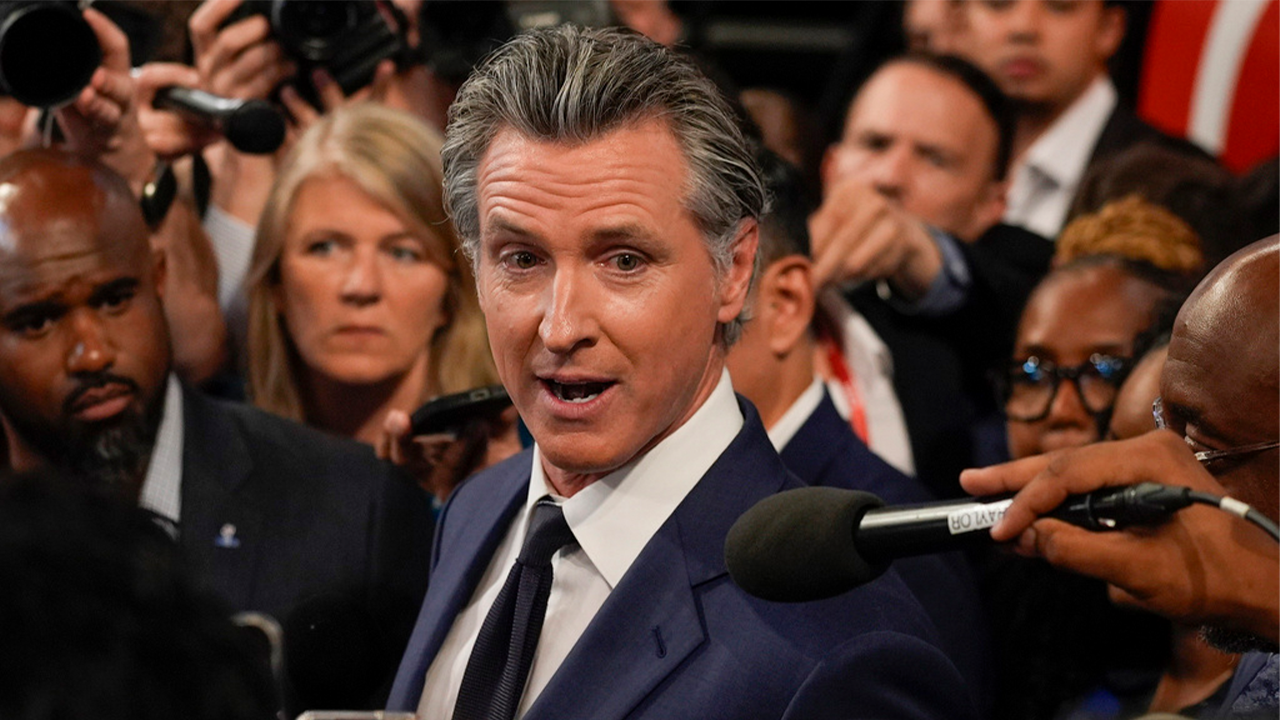Entertainment
Review: 'A Quiet Place: Day One' is the rare prequel that outclasses the original for mood

To watch “A Quiet Place: Day One” is to recalibrate your senses — not to the alien horror movie you know is in store but rather, to the intimate human drama it hangs onto, long after a lesser film would have given up. Among its lovely images, there’s the distant New York skyline seen beyond a Queens cemetery, a sight familiar to anyone who’s ever driven into town. There are the resigned glances of terminal patients in hospice. Mostly, we take in the exquisite face of Lupita Nyong’o as Sam, a young person in the prime of life stricken with cancer, who carries the unfairness of her situation just below the surface.
Sirens and fighter-jet shrieks ease their way into the sound mix, as they must in any prequel to 2018’s civilization-ending “A Quiet Place” and 2020’s more-of-the-same “A Quiet Place Part II.” But even as smoke and white ash fill the air (best to leave those Sept. 11 memories at home) and pissed-off creatures rampage like cattle down the city’s glass and steel canyons, there’s an unusual commitment to the darker fringes of postapocalyptic moviemaking. It’s less “Furiosa” and more “The Road.”
Sam is already prepared to die, lending the film an impressively bleak tone and sparing us the rote machinations of hardy-band-of-survivors plotting. All she wants to do is walk — very quietly — approximately 120 blocks north from Chinatown to Harlem, where she can scarf the last slices of pizza from Patsy’s before such delicacies become ancient history.
Joseph Quinn in the movie “A Quiet Place: Day One.”
(Gareth Gatrell / Paramount Pictures)
It’s a refreshing, near-radical concept to build a studio film around, and as Sam sets off, a tote bag on her arm and her black-and-white support cat Frodo beside her, you may be reminded of that other woman-and-feline survival story, “Alien,” stripped to the bone. (One also wonders, glumly, how NYC’s thousands of dogs fared with these tetchy sound-averse invaders.)
The person pulling all this off is director-screenwriter Michael Sarnoski, last seen evincing a recognizably human performance from Nicolas Cage as a crumpled, broken chef in “Pig,” which was also about facing a kind of personal catastrophe. (He’s now made two of the most downbeat foodie films in a row.) Sarnoski, who wrote the story with original creator John Krasinski, does fine enough by the James Cameron-like action sequences that probably were mandated by the powers that be: chase sequences in flooded subway tunnels — yuck — and abandoned landmarks.
But he’s stronger on personal moments, such as the finest take of Djimon Hounsou’s career, consumed in spiraling guilt and choking back a scream after accidentally killing someone for panicking too loud. There’s also a business-suited Brit (Joseph Quinn, last seen shredding to Metallica in “Stranger Things”) who only wants to join Sam on her pizza quest. With a minimum of words, we somehow understand that he’s devoted way too much of his time on the planet to not connecting with other human beings, and he may only get this one day to make up for it.
You can take or leave a subplot about Sam’s writing career and thwarted dreams. For this viewer, there’s more poetry in her stopping at an abandoned bookstore, as we all would do, picking up a used paperback (fittingly, Octavia E. Butler’s 1987 sci-fi novel “Dawn,” which you sense she has read) and sniffing the pages: a history captured in a scent. She too is savoring humanity’s last vestiges. This is a film that seems to know a lot about future psychology. May we never know such mournfulness outside of an ambitious summer blockbuster.
‘A Quiet Place: Day One’
Rating: PG-13, for terror and violent content/bloody images
Running time: 1 hour, 39 minutes
Playing: In wide release June 28.

Entertainment
25 years after 13-year-old dancer's death, her legacy lives on at L.A. charter schools

The Angelus Temple megachurch in Echo Park was the unlikely venue (and largest to date) for the Gabriella Charter Schools’ year-end dance recitals. Friends and family packed the 5,300-seat, three-story theater for two performances on a Saturday in June, which transported them from California’s redwood forests and Central Valley farms to the schools’ home of Los Angeles.
Sixth grader Annabelle Soriano took the stage as a voice-over in English and Spanish told the story — inspired by José Cruz González’s play “Two Donuts” — of a Guatemalan American girl who doesn’t see the beauty in her L.A. neighborhood. So, in her dreams, she embarks on an adventure through the Golden State in search of meaning. Students explore California through classic dance styles including tap, hip-hop and ballet mixed with moves popularized on TikTok and by the video game “Fortnite.”
Audiences lined Glendale Boulevard hours before the two performances. Gabriella Charter Schools Executive Director Rhonda Baldenegro said this is the norm for the schools’ annual recital — even though it’s only their second in-person performance since the COVID-19 pandemic.
Parents made costumes for each campus’ annual recital, including cactus sweatsuits for the third-grade “Joshua Tree” performance.
(Heather Seybolt)
The event’s popularity is a testament to Liza Bercovici’s decades-long commitment to dance education. Bercovici, a former attorney, founded an after-school dance program for low-income communities in 1999 in honor of her 13-year-old daughter, Gabriella Axelrad, who was killed that year by a distracted driver while bicycling during a family vacation. Gabriella was a dancer and dreamed of becoming a teacher. In 2005, the program grew into a charter school for students from kindergarten through eighth grade. The Echo Park campus that is now its home opened in 2009 and spawned a second location in South L.A. in 2017. About 400 students are enrolled at each school.
Twenty-five years after Gabriella’s death, her legacy lives on.
“We serve a pretty impacted population and any experience that can be offered them that enhances their lives, to me, is just really, really important,” Bercovici said. “We as an organization have made this commitment to provide arts and dance at a very high level and a very frequent level, and that’s very atypical.”
Baldenegro said GCS is one of the few public schools in the country to teach dance as a part of the curriculum multiple days a week. For many of GCS’ low-income students, it’s their sole opportunity for formal dance training.
Even after their big year-end recital, as summer vacation loomed, the kids at GCS kept dancing. For five students, the dancing will continue through the summer at the Theatrical Education Group’s Summer Arts Conservatory at Los Angeles County High School for the Arts. While enrollment costs more than $1,200, GCS students received full-ride scholarships.
GCS dance instructor Antavius Ellison was the catalyst in connecting the school and the program.
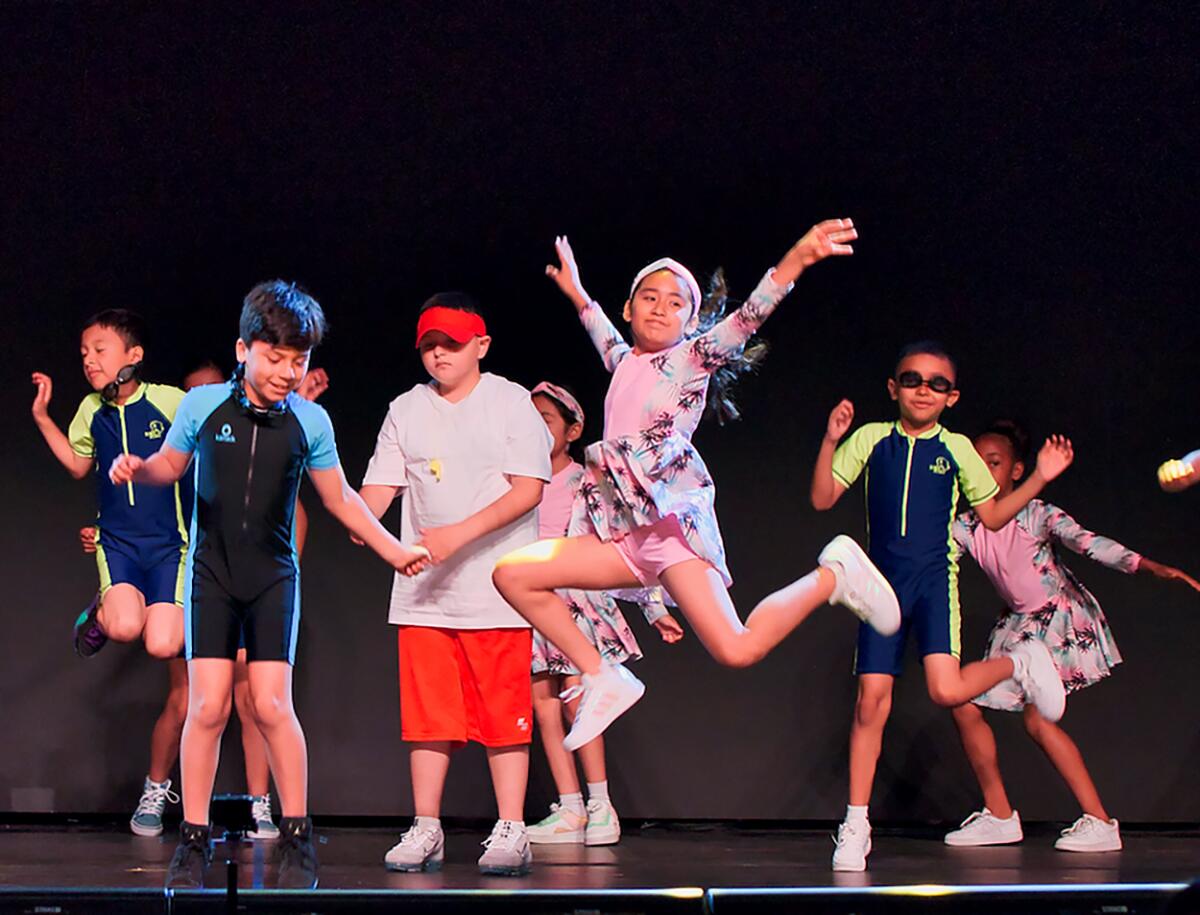
The Gabriella Charter Schools’ “Cali Dreams” recital, which included the third grade’s “Beach” routine, depicted different areas of the state.
(Emann Mallorca)
“The more I’m able to introduce [students] into those spaces now lets me feel like, ‘Hey, you’re doing your job. You didn’t have this growing up and now you’re able to pay it forward [in] a very hopeful way,’” said Ellison, a professional dancer who’s appeared in music videos for SZA and Hozier. “I feel like that’s one of my purposes for being at GCS right now. … I take it as a sign from God that you are doing just what you need to do.”
One of the conservatory scholarship recipients is rising eighth grader Madison Pinon, whom Ellison personally chose for the scholarship. He calls her his “little assistant/mentee.”
“As soon as she found out, I’ve never seen that smile,” Madison’s mother, Berlin Pinon, said. “[It was] ear to ear that whole weekend.”
The young dancer joined GCS in fifth grade. She hadn’t taken classes since she was 8 years old. As her dance skills progressed, Madison began assisting Ellison in leading classes for younger students at the Echo Park campus.
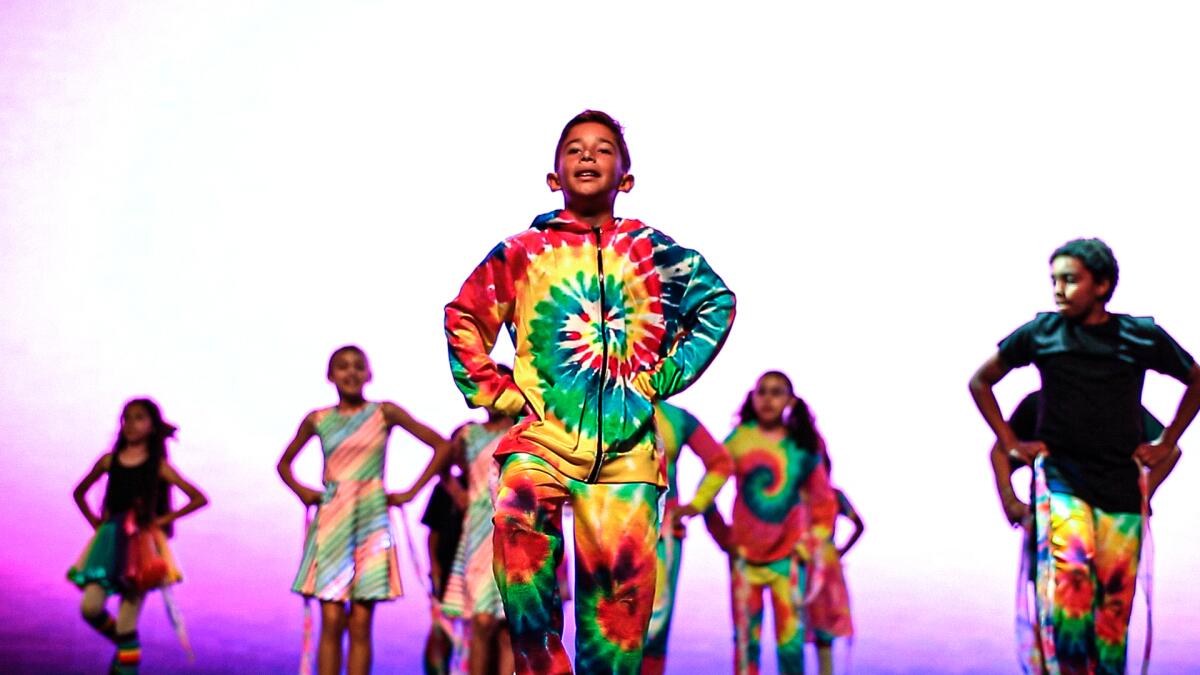
The 2024 dance recital marked the schools’ second in-person performance since the COVID-19 pandemic.
(Heather Seybolt)
The 13-year-old hopes to learn new styles of dance during the three-week program in July.
“In sixth grade, I discovered dance is something I can pursue in the future, something I can do for a living,” Madison said. “I feel like if I believe in the fact that I can — and in myself — I probably would be able to get there.”
Fifth-grader Nathan Sandoval is one of the scholarship recipients from the South L.A. campus. His mother, Nora Martinez, was “in shock” when she found out about the opportunity.
“I feel so blessed because they see my son has talent,” she said. “These are achievements that he’s doing himself because he loves [dance].”
Martinez said the 11-year-old was a born performer who finally shed his shyness at GCS.
“He always tells me before he goes onstage, ‘Mom, I’m doing this for you because you cheer for me and I know you’re going to like my dance,’” Martinez said.
Even as the COVID-19 pandemic forced schools into virtual learning, the dancing never stopped. During the spring 2020 semester, dance instructors recorded videos for students to watch, said Echo Park principal Stephanie Piazza. The school still put on its recital — although that year’s took the form of videos stitched together of the students dancing at home.
“In a lot of places, the pandemic stopped stuff that schools had been doing. And we just were like, ‘No, this matters. This is important. We’re going to figure out a way to do it,’” Piazza said. “Anytime I see a clip of the [2020] performance we did, it’s really emotional because we were all so lonely and sad, and we still found ways to connect like that.”
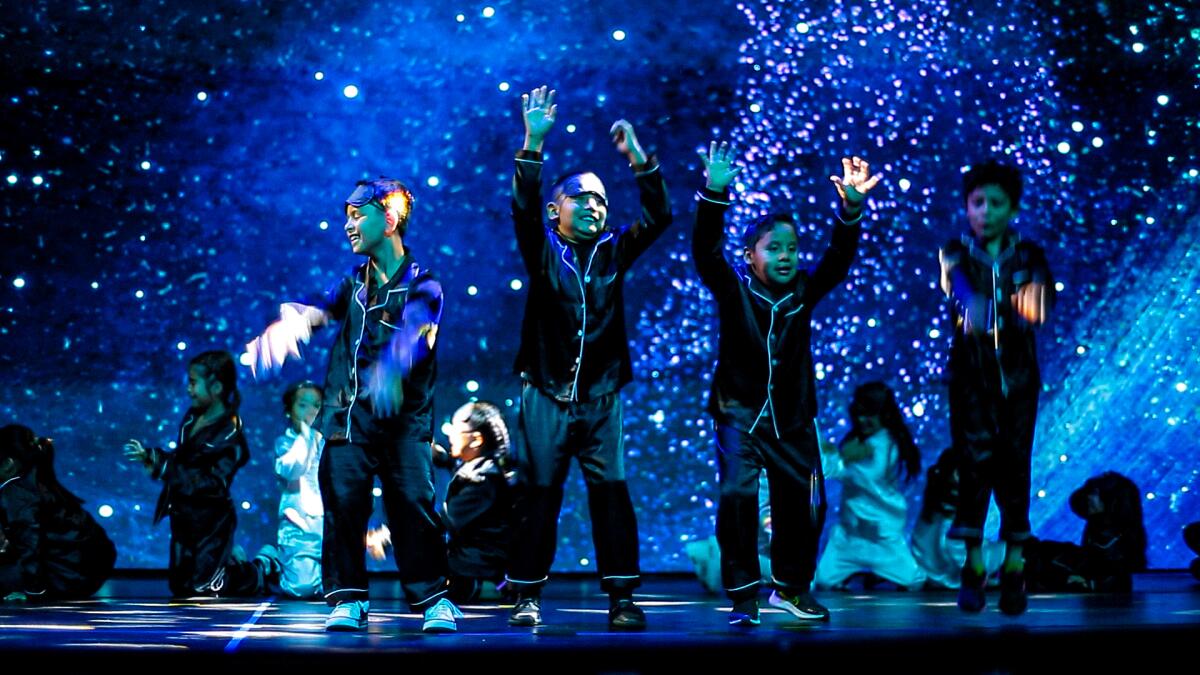
Gabriella Charter Schools teach dance to students three days a week, every week.
(Heather Seybolt)
The schools’ commitment to dance earned them a California Pivotal Practice Award for innovation during the shutdown.
“Something I’m really proud of is that we never stopped doing any arts, even as budgets go everywhere all the time in California, that’s just because it’s our mission and vision that will never get touched,” Piazza said. “[Dance is] such a powerful way for kids to express themselves. … It’s really amazing for kids, as young as 4 at our school, to have this other space where they can shine.”
Dance classes have been shown to help students’ physical and emotional well-being. In 2016, the Copenhagen Consensus Conference found that physical activity improves scholastic performance and brain function. Meanwhile, children’s arts education has been linked to improved grades and attendance.
“We really, truly believe in sort of the transformative power of dance, and how it can help kids learn better and just be more competent, poised individuals who have this great mind-body connection when it comes to learning,” Baldenegro said.
Walking through the Echo Park campus, everyone knows everyone else’s name. The common theme among students, family and faculty: a love for the community the schools have created.
“A lot of kids at my old school, they all kind of stick to their own group and they aren’t so happy,” Madison said. “But here, a lot of people are happy; they get really happy through dance.”
The schools’ dance classes mix classic cardio exercises such as jumping jacks and high knees with choreography. The students move to popular tunes from artists such as Kali Uchis and Harry Styles. One dance to Drake’s “Controlla” was choreographed — and, for the first-grade class, led — by Madison.
Previously, Madison “stuck to choreography” that was familiar to her. She has since felt empowered to choreograph original dances in order to “express more” through her own movements, she said.
“I’ve seen a lot of growth within her, not only in her dancing skills — obviously with more practice that’s bound to happen — but just leadership skills and discipline. She really is committed and sets plans for everything,” Berlin said. “I can see she’s shaping up to be a great young woman.”
After the class concluded, two second-graders wanted to show off a dance they made up, complete with acrobatics.
“I couldn’t have paid them to have done that last semester,” Ellison said.
While the dance instructors at the schools are in charge of choreographing the recital, Ellison said he makes sure to incorporate his students’ moves.
“I want to give my students more agency to be able to create because I feel like that allows them to be more confident within themselves,” Ellison said. “They are taking up space in a very healthy way. … A space is given for them to trust in their natural abilities, and to understand that movements and creativity will always look different, based off of the person, and there is no — to me — right or wrong way to move your body, to dance.”
Movie Reviews
‘Kinds of Kindness’ review: Darkly comedic anthology explores humanity

Throughout his filmography, Yorgos Lanthimos is interested in themes of love and obsession, often explored with characters, who seem to be living on the edge of normal society, as evident in 2009’s Dogtooth, which centered on a husband and wife who keep their children ignorant of the world outside their property well into adulthood. 2024 is already quite the year for the Greek director as his previous outing Poor Things has been a critical and commercial success that has won four awards at this year’s Oscars, and now his latest feature Kinds of Kindness is finally released.
Amidst the Frankenstein-like science and “furious jumping”, Poor Things is more of a crowd-pleaser through its story of self-discovery within the harsh reality of the otherwise outlandish world. Reunited with his long-time collaborator/co-writer Efthimis Filippou, Kinds of Kindness – set in modern-day New Orleans – is closer to Lanthimos’ earlier work like The Lobster and The Killing of a Sacred Deer, where people are plunged into situations that effectively shake up their lives and lose any touch of humanity in order to get out of it.
Since Lanthimos’ films often challenge you, though not without some dark humor creeping into the mix, Kinds of Kindness is essentially three films for the price of one, with the same seven actors – Emma Stone, Jesse Plemons, Willem Dafoe, Margaret Qualley, Hong Chau, Joe Alwyn and Mamoudou Athie – appearing in each one in a different role.
The first of which, titled “The Death of R.M.F”, is about Robert Fletcher (Plemons) who follows every order that is given to him by his controlling boss, Raymond (Dafoe), until he refuses to do an act which causes his life to fall apart. Similar to Lanthimos’ 2019 short film Nimic, it is a darkly funny study of a man who regrets this one decision and how it spirals out of control, with an extraordinary turn from Plemons, who tries to maintain his composure and yet it looks he’s about to break.
Considering the disturbing outcome of the first narrative, it feels tamed compared to the second story, “R.M.F. is Flying”. Left emotionally devastated after the disappearance of his wife Liz (Emma Stone), a marine biologist, police officer Daniel (Plemons) receives a call saying she has been rescued. As she returns home, her strange and seemingly reversed behavior leads to Daniel suspecting her of being an imposter. As well as being more disturbing and ambiguous than the other two narratives, “R.M.F. is Flying” cements a central theme which is somewhat meta to the film’s multiple casting of the same actors, playing characters who are wrestling with their own identity. Playing a married couple that is becoming more about obsessive delusions, leading to horrific abuse, Stone and Plemons are amazing in roles where you can’t tell whose side you should be on, if any.
As great as Emma Stone is in the first two narratives, it is in “R.M.F. Eats a Sandwich” where she really gets to shine, and yes, this is where she performs her improvised dance that has been used in the film’s promotion. In this third and final instalment, Emily and Andrew (Stone and Plemons) are two cult members who are looking for a woman with the ability to bring back the dead. Considering this is the closest to a Coen Brothers film, where it almost feels like an enjoyable crime caper, what could easily be a cautionary tale about not joining a sex cult led by Dafoe’s Omi, the story makes a dark implication into why Emily would choose the life of a cultist, as seen in a scene where she revisits her old life as a mother and a wife.
Considering the hopeful nature and visual experimentation of Poor Things, whether consciously or not, it feels Lanthimos wants to return a world where there is no positive outcome of anybody, whilst cinematographer Robbie Ryan, shooting on 35mm Kodak film, presents a stunning, if mundane look of the many settings of New Orleans. Amongst the loose connective tissue between these three tales, including the brilliant cast and similar locations, the only sense of hope that Kinds of Kindness is the dreams that some of the characters have and no matter how nonsensical they are, it is better than the harshness that the real world can throw at them. One dream involving dogs delivers the biggest laugh-out-loud film of the entire film.
Join the AIPT Patreon
Want to take our relationship to the next level? Become a patron today to gain access to exclusive perks, such as:
- ❌ Remove all ads on the website
- 💬 Join our Discord community, where we chat about the latest news and releases from everything we cover on AIPT
- 📗 Access to our monthly book club
- 📦 Get a physical trade paperback shipped to you every month
- 💥 And more!
Entertainment
'Interview With the Vampire': Rolin Jones on Season 2's finale; what's next for Louis and Lestat
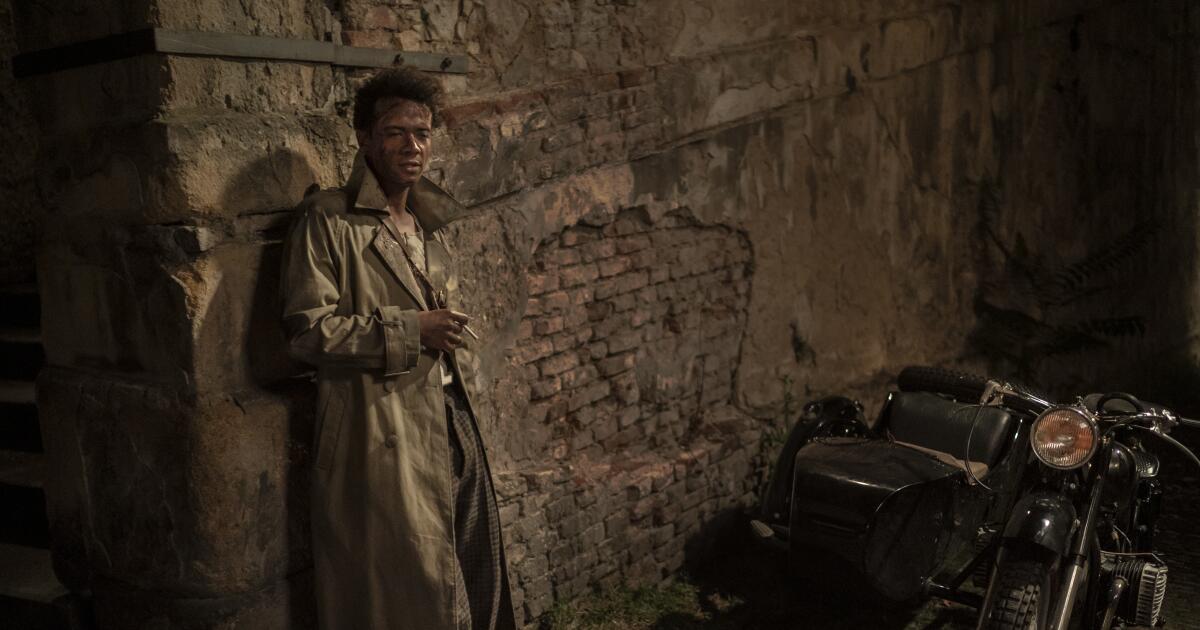
This article contains spoilers for Season 2 finale of “Interview With the Vampire.”
Though he’s now the showrunner for AMC’s “Interview With the Vampire,” Rolin Jones was initially unfamiliar with the Anne Rice novels that the TV series pulls from.
He first met with AMC executives in 2020 to discuss shows he’d potentially develop as series for the network, and just as he was preparing to leave, one executive casually mentioned that the company had recently acquired the rights to Rice’s books — might he be interested?
“The truth is I was really interested in making a love story and doing something grand and big,” Jones said in a Zoom interview earlier this month. “I wanted to see if they let me make a David Lean kind of thing.”
Jones, whose television career includes credits on critically acclaimed shows like “Friday Night Lights,” “Boardwalk Empire” and the revamped “Perry Mason,” read Rice’s “Interview With the Vampire” — her debut novel — and watched the 1994 movie adaptation that starred Tom Cruise and Brad Pitt. He quickly realized he would approach the series much differently from the film. He said AMC executives put him through a rigorous evaluation process to determine what the show could look like.
“They didn’t want just the pilot and they didn’t just want Season 1,” Jones said. “They really wanted to know what the hell is this thing and how long can we put it on the air for.”
Fans now have two critically acclaimed seasons of the gothic horror story that stars Jacob Anderson and Sam Reid as vampires Louis de Pointe du Lac and Lestat de Lioncourt, respectively. Season 2’s finale aired Sunday, ending Louis’ journey of recounting his human and vampire life to reporter Daniel Molloy, played by Eric Bogosian.
The story picks up with Louis and child vampire Claudia, played by Delainey Hayles this season, grappling with the consequences of their failed murder attempt on Lestat and the moral implications of their vampiric existence. They travel through Europe and eventually end up in Paris where they meet a coven, founded by Lestat, of theater-performing vampires. Louis finds a new love in the coven’s 500-year-old leader Armand, played by Assad Zaman.
After concealing their ties to Lestat, Louis and Claudia are eventually discovered and put on trial for breaking multiple “great laws,” the rules all vampires must abide by, and are punished. Sunday’s finale titled “And That’s the End of It. There’s Nothing Else,” follows the aftermath of Claudia’s death. Louis burns down the theater, killing most of the coven’s members, and learns that it was Lestat who saved him during the trial, leading him to reconnect with his toxic former lover.
Sam Reid as Lestat De Lioncourt in Season 2 of AMC’s “Interview With the Vampire.”
(Larry Horricks / AMC)
The series was renewed for a third season Wednesday, and it will primarily focus on the events in Rice’s “The Vampire Lestat,” which finds Lestat reclaiming his narrative as a rock star (During the interview, Jones proudly showed off his notes in the margins of his copy of the book.) The renewal comes after Jones signed a new multiyear overall deal with AMC Studios.
Jones spoke to The Times about Delainey Hayles, who replaced Bailey Bass as Claudia for Season 2; the complex bond between Louie, Armand and Lestat; and the stories the show will explore in Season 3 and beyond. These are edited excerpts from the conversation.
How are you feeling after wrapping up Season 2?
Go look at the first shot of Jacob Anderson in Season 1 and the last shot of Season 2 and look at the difference between those faces. You’ll see how much work has been put into the 3 1/2 years. It was an exhaustive but satisfying ending to it all. And it was rigged not to work. We had a lot of obstacles. It wasn’t just the [writers’ and actors’] strikes. There were a lot of snake-bitten things that happened along the way and you’re not sure if it’s going to hold together.
You reshot some scenes for Season 2 because the whole point is that Louis is battling his memory. Whose version of events should we believe?
He basically tells Molloy, “I think you should listen to Lestat’s version.” [Louis] is just coming up to it and going, “Maybe I was still telling you this thing where I was still trying to preserve either the hero, or me, or some stuff had broken down.”
I would listen to Louie. The show is about Louie coming to terms with all those things. He had a tortured way to get there. But by the end, he’s the one who gets on a plane, heads back to New Orleans, and seeks Lestat out. There isn’t any confusion there. There’s just a little ramp for a little bit of contrition, some forgiveness, and the beginnings of rebuilding it all. That’s what’s cool about the show — that murkiness can be there.
How did you know Delainey Hayles was right for Claudia? [Hayles replaced Bass, who left the series last year after “unforeseen circumstances.”]
We have this incredible casting director and she brought in four actors, and they were all terrific. The idea was let’s see all these four actors. Then, we’re gonna go to this restaurant and we would sit down and discuss all the actors that we saw. We get there and we look at each other, and we all go “Delainey” immediately, and there wasn’t much discussion. None of the other actors were giving bad performances, there was just some sort of magic you just felt. This is an actor you’re gonna see for the next four years; we got the first crack at her.
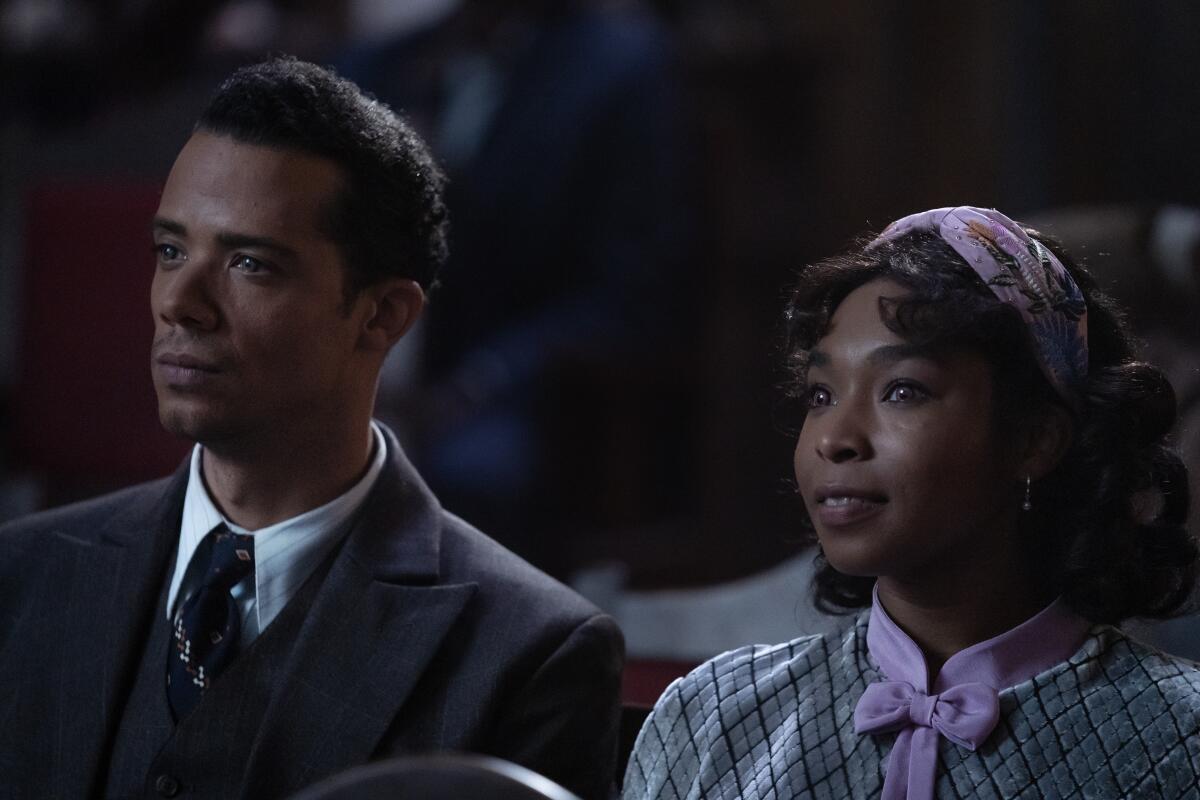
Jacob Anderson as Louis De Point Du Lac and Delainey Hayles as Claudia, who joined the series for Season 2.
(Larry Horricks / AMC)
We all know Claudia is dead now. Was there ever a version where she lived?
No. Anne wrote that book out of the mourning of losing a child. The changes that we made for the plot were really thought out and battled out, and then aggressively pursued once we did it. We’re always trying to first and foremost, honor the spirit of what was going on in the novel. So, no, Claudia was never gonna live. It was mostly a battle about how to most beautifully, or most hauntingly, or most painfully — however you want to say — give a death worthy of the character. Claudia will probably be haunting the show for a little bit.
Would you agree that she was defiant in her last moments?
Defiant is right. She is arguably the most aggressive, the most vampiric out of all the vampires that we’ve shown so far. I think she is a real predator and a real tough, fierce individual.
There was also a big love triangle this season between the vampires. How do you feel about people’s reactions to the throuple-esque energy?
I think the strange, wonderful thing about the show’s reception is that it seems to be equally thrilling and maddening for everyone. Everyone gets to ride on the shoulders of the vampire they most identify with and get angry with the ones they don’t. We weren’t a judgmental writers room. We just tasked ourselves with manifesting Anne’s truly messed up characters and making them messy.
It’s been hard for people to reconcile with the fact that Louis forgave Armand after he betrayed him in these last episodes. Can you break that down?
In the writers room, when we started Season 2, we read Part 2 and Part 3 out loud as writers. One of the things that we were moved by was this embankment speech that Armand makes to Louis just talking about how much he has thrown at Louis over these years and given to him and Louis has just been cold. The task was to make him not a cartoon villain, but make him as empathetic as possible.
We’ve landed on the idea that Armand has two real moments of weakness. At the end of Episode 6, he could have arguably said, “Hey, me and you let’s get out of here. Let’s run away and be together.” And he says it in Episode 8. He’s like, “The choice was my coven who had been with me for 200 years or you.” If you go back and look at the kiss they had in the scene and Louie just walks away. Armand’s like, “This guy can live without me. What am I doing?” This idea that we all want to judge everybody is not how our writers room works. We’re trying to create very complex, super-flawed people.
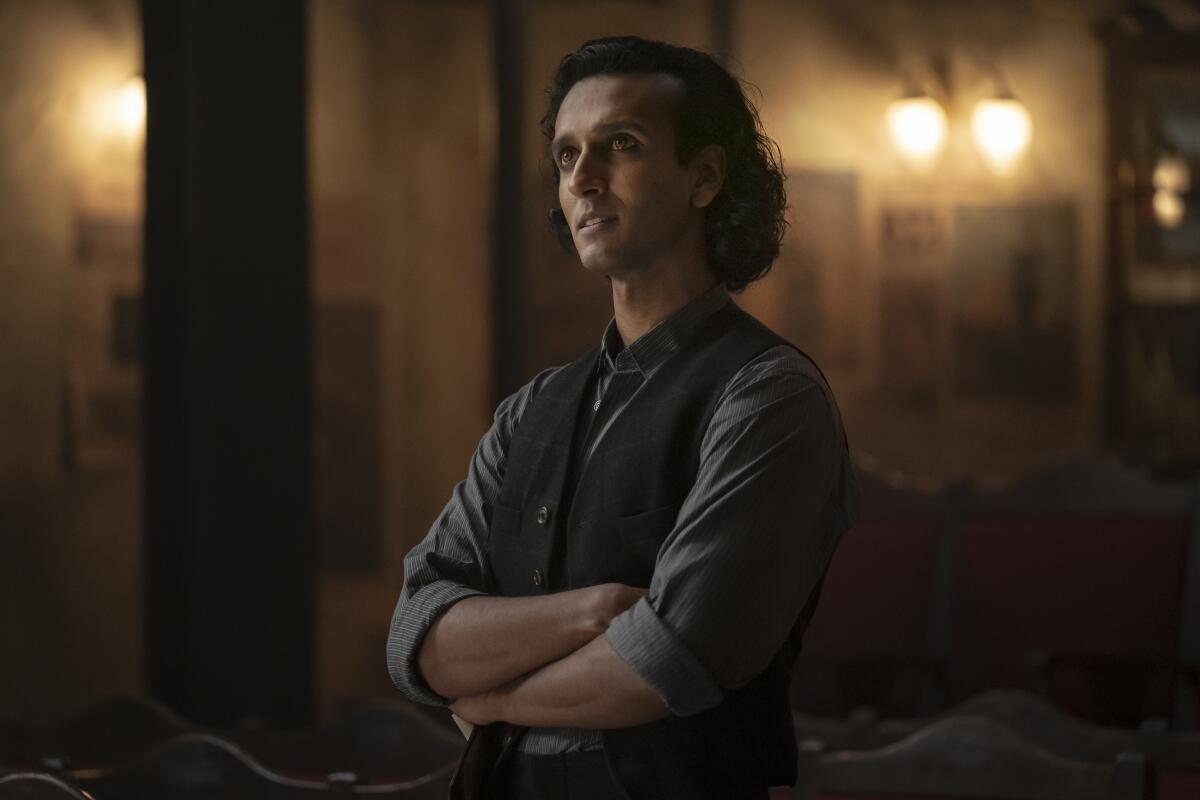
Rolin Jones on Armand’s (Assad Zaman) feelings toward Louie: “This guy can live without me. What am I doing?”
(Larry Horricks / AMC)
Are you happy with Lestat’s journey this season? We last see him being a recluse in New Orleans all these years after saving Louis.
I think what this season does is set the desire for the audience to hear Lestat’s version of things. When you look back on this season, Louis is slowly remembering there’s another side of Lestat he hasn’t been selling the audience aggressively on. I’m satisfied with where we placed them. There’s a lot of work to do. They’re not together at the end and there’s a place to go dramatically. They want 10 seasons of this show. They’re not slamming together at the end. That isn’t happening.
Does Louis find peace at the end?
For Jacob Anderson, there’s a very innocuous little line that was most important to him that he balanced this whole season on. It was a moment when he’s having that telepathic conversation with Molloy at the end, and he’s like, “I’m worried about you, Louis.” Jacob looks right past the cameras and says, “I’m fine.” For Jacob, it was the first time that he portrayed that character where he felt like the thing that he was saying was the way he felt.
[At the end of Episode 8] the camera goes straight to his face before he says, “I own the night,” and that’s the idea that there’s a whole new set of stories to write about that character now. There’s a swagger and a strength there. Most of his baggage has been shipped. Louis is not leaving this show, that’s all I’m saying!
What will Season 3 look like?
Lestat becomes a rock star. Let’s start there. We’re going to do a lot with that and are excited about potentially working with Daniel Hart who’s done the music for the first two seasons. We’re going to try to beat “Hedwig and the Angry Inch” and “Rocky Horror.” We’re about to try to make a little pop masterpiece.
Anything else you would like to mention?
The deeper I get into [Anne Rice’s] books, I’m slowly catching up to the love that the people who really love the show have for these books and clutch them to their hearts. So many of the artists who worked on our show talked about how the tone of the book allowed them to think about coming out. These books are important to people. I feel very privileged and very lucky to be this person who’s shepherding that to a new generation at this point.
-

 News1 week ago
News1 week agoTracking a Single Day at the National Domestic Violence Hotline
-

 World1 week ago
World1 week agoIsrael accepts bilateral meeting with EU, but with conditions
-

 News1 week ago
News1 week agoA Florida family is suing NASA after a piece of space debris crashed through their home
-

 World1 week ago
World1 week agoIs Israel’s Smotrich fulfilling his dream of annexing the West Bank?
-

 News1 week ago
News1 week agoSupreme Court upholds law barring domestic abusers from owning guns in major Second Amendment ruling | CNN Politics
-

 Politics1 week ago
Politics1 week agoSupreme Court upholds federal gun ban for those under domestic violence restraining orders
-

 World1 week ago
World1 week agoNew Caledonia independence activists sent to France for detention
-

 World1 week ago
World1 week agoIsrael will be the ‘ultimate loser’ in war with Hezbollah, Iran says

/cdn.vox-cdn.com/uploads/chorus_asset/file/24401977/STK071_ACastro_apple_0001.jpg)
